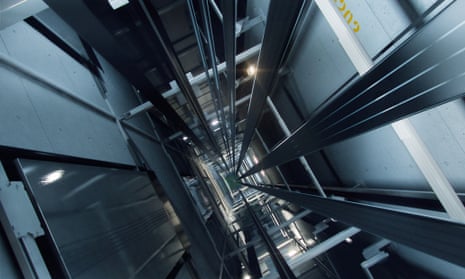Leading Lift Companies in London: Providing Exceptional Service and Assistance
Leading Lift Companies in London: Providing Exceptional Service and Assistance
Blog Article
Exploring the Globe of Lifts: Typical Issues Encountered by Different Lift Mechanisms
As we navigate via the vertical transportation systems of modern buildings, lifts stand out as an essential part of our day-to-day lives. From hydraulic elevators to grip systems and machine-room-less designs, each lift type comes with its collection of common problems.
Hydraulic Lifts
Hydraulic lifts, frequently preferred for low-rise buildings, use fluid stress to regulate the movement of the elevator auto (lift repair companies). This mechanism includes a hydraulic pump pushing oil into a cyndrical tube, causing the lift to relocate in the preferred direction. While hydraulic lifts are understood for their smooth and silent procedure, they do feature their very own collection of typical concerns
One prevalent trouble with hydraulic lifts is oil leak. Additionally, problems with the control system, such as faulty shutoffs or a malfunctioning pump, can create disruptions in the lift's motion.
Routine maintenance and prompt repair work are necessary to guarantee the smooth performance of hydraulic lifts. By dealing with these usual concerns proactively, building owners can lessen downtime and guarantee the safety and performance of their vertical transport system.
Traction Lifts
When thinking about upright transportation systems in buildings, another common type besides hydraulic lifts is the grip lift. Grip lifts run making use of a system of ropes and weights that relocate the elevator auto by clutching onto the hoist ropes. This mechanism enables smoother and much faster upright transportation contrasted to hydraulic systems.
Among the common concerns dealt with by grip elevators is rope wear. The consistent motion of the ropes within the traction system can bring about damage with time, potentially causing the lift to malfunction or come to be dangerous for use. Routine assessments and upkeep of the ropes are necessary to ensure the elevator's proper performance and safety.
Another concern that grip elevators may come across is associated with the control system. Issues with the control system can cause concerns such as unpredictable activity, hold-ups in response times, or perhaps total closures. Regular testing and upkeep of the control system are essential to protect against such concerns and ensure the lift's integrity.
Machine-Room-Less (MRL) Elevators

Among the crucial parts of MRL elevators is the small gearless grip maker that is set up within the hoistway. This equipment efficiently drives the lift car without the requirement for cumbersome devices located in conventional traction lifts. In addition, MRL elevators commonly make use of a counterweight system to stabilize the vehicle, additional boosting their power performance.
Despite their benefits, MRL lifts might face difficulties connected to repair and maintenance because of the restricted room for tools installation. Access for servicing components within the shaft can be restricted, needing specialized training for professionals. Correct maintenance schedules and routine evaluations are vital to make certain the continued smooth operation of MRL lifts.
Overloading and Weight Restriction Issues
Are elevators geared up to manage excess weight loads successfully and securely? Overloading and weight restriction concerns are essential worries in lift operations. Lift suppliers design lifts with details weight abilities to guarantee traveler security and devices long life. Surpassing these weight restrictions can lead to numerous troubles, including mechanical failures, hold-ups, and security hazards.
When elevators are overloaded, it places too much pressure on the electric motor, wires, and various other components, possibly triggering malfunctions or malfunctions. Safety devices such as sensors and overload sensing units are in place to avoid elevators from moving if they spot excess weight. In addition, exceeding weight limits can result in increased energy intake and damage on the lift system.
To minimize straining issues, building supervisors must plainly show weight limitations in elevators and inform residents on the importance of adhering to these limitations - lift repair companies. Normal upkeep checks by certified specialists can also aid make sure that elevators are running within safe weight parameters. By dealing with overloading and weight limitation issues proactively, structure owners can boost lift safety and security and performance
Electric System Failings
Surpassing weight limits in elevators can not only bring about mechanical concerns however also possibly add to electric system failings within the lift facilities. Electric system failures are an important issue in elevator procedure, as they can trigger unforeseen shutdowns, breakdowns, or perhaps safety and security threats. One typical electric problem is the overheating of components due to extreme present circulation triggered by straining the elevator past its capacity. This can result in harm to the motor, control, or circuitry systems, leading to pricey repair work and disabled platform lifts prices uk downtime.
Moreover, power rises or changes in the electric supply can additionally disrupt the elevator's procedure, impacting its performance and security. These electric disturbances can damage sensitive elevator elements such as control panels, motherboard, or sensing units, causing system failings. Normal maintenance and assessments are critical to recognize and address possible electric problems without delay, making sure the risk-free and efficient procedure of elevator systems. By sticking to weight limits and performing regular electric system checks, building proprietors can alleviate the danger of electric failures in elevators.
Conclusion

Hydraulic lifts, usually liked for low-rise structures, make use of fluid stress to control the activity of the elevator auto.When considering vertical transportation systems in structures, one more usual type apart from hydraulic elevators is the grip lift. Traction elevators run using a system of ropes and weights that move the elevator vehicle by grasping onto the hoist ropes. Unlike conventional lifts that call for a separate equipment room to house the devices, MRL lifts incorporate most of london lift company the elements within the shaft, removing the need for a dedicated equipment area.In verdict, elevators face common concerns such as hydraulic breakdowns, grip system failures, and electric system troubles.
Report this page